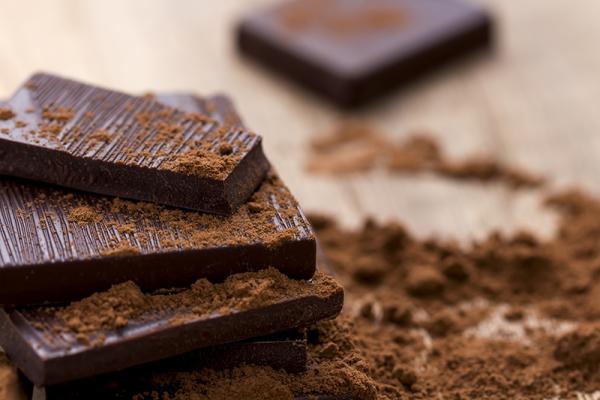Co-op Savings
Current Posts

Health Benefits of Chocolate
Roses are red
Violets are blue
Chocolate is so tasty
And it’s good for you!
(Particularly the dark variety)
Although Valentine’s Day has come and gone, my love for chocolate lives on throughout every day of the year. Especially after lunch, for some reason; that’s when the craving usually kicks in. But since the month of February is undoubtedly the biggest sales month for this mouthwatering treat, it seemed like a good time to take a closer look.
Nutritional Benefits
Healthy? Chocolate’s healthy? It sounded too good to be true. Dark chocolate started showing up on super food lists a few years back and since that time, with a number of studies showing a number of health benefits, it hasn’t budged.
But the thing is, it’s dark chocolate that has the most powerful nutritional benefits, and the darker the better.
The health benefits associated with dark chocolate are numerous and they include: Improved concentration and brain power, anti-inflammatory benefits, improved cardiovascular health and lower blood pressure, protection from harmful UV rays, cough relief, mood elevation and more.
Many of the benefits come from the high levels of polyphenols that have an antioxidant effect, which, in high levels, have been known to help protect against certain types of cancer.
Dark chocolate also contains high levels of vitamins, such as A1, B1, B2, C and E, minerals, such as calcium, potassium, sodium, magnesium, iron, zinc, copper, chromium and phosphorous.
Dark Chocolate
Chocolate lovers out there know that the darker the chocolate, or the higher the percentage of cocoa content, the more bitter the flavor. However, artisan chocolate companies have developed “high octane,” super dark chocolate, formulated carefully to make even the darkest of chocolate still taste good. This bitterness is typically removed in the roasting process, allowing some sweetness to still shine through.
The general rule of thumb says that high-quality dark chocolate should have a minimum of 60 percent cocoa content and since the higher the cocoa the more potent the nutrition, you can go as high as you can tolerate for the most bang for the buck. And the darker the bar, means the more complex the flavor, allowing the consumer to better enjoy the flavor and aromas of the beans, kind of like coffee.
Other Varieties
With a sweeter, creamier, smoother flavor, high-quality milk chocolate, on average, contains a less than 45 percent cocoa content. At the same time, it also tends to contain more sugar. So, not only are the flavors watered down by milk and sugar, also not unlike coffee, but so are the health benefits. However, mass-produced, lower-quality milk chocolate typically contains around 10 percent cocoa, so milk chocolate devotees should opt for quality.
White chocolate, well, it’s not really chocolate. Instead of using cocoa beans, it’s made with cocoa butter, more like a vegetable fat that’s extracted from the bean. Again, much of the lower quality, mass-produced white chocolate use a processed oil instead, white chocolate lovers should opt for a quality brand.
So dark chocolate is as good as it tastes, but that doesn’t mean you should be crushing a bar a day. Like everything, moderation is key, but feel free to love up your chocolate.

 Co-op West Main • Friday-8 am - 9 pm
Co-op West Main • Friday-8 am - 9 pm






